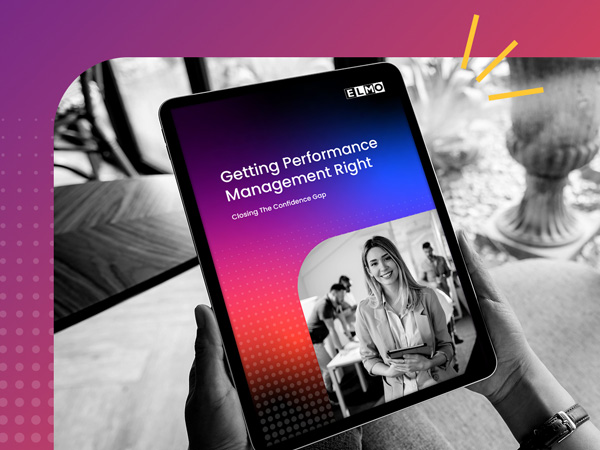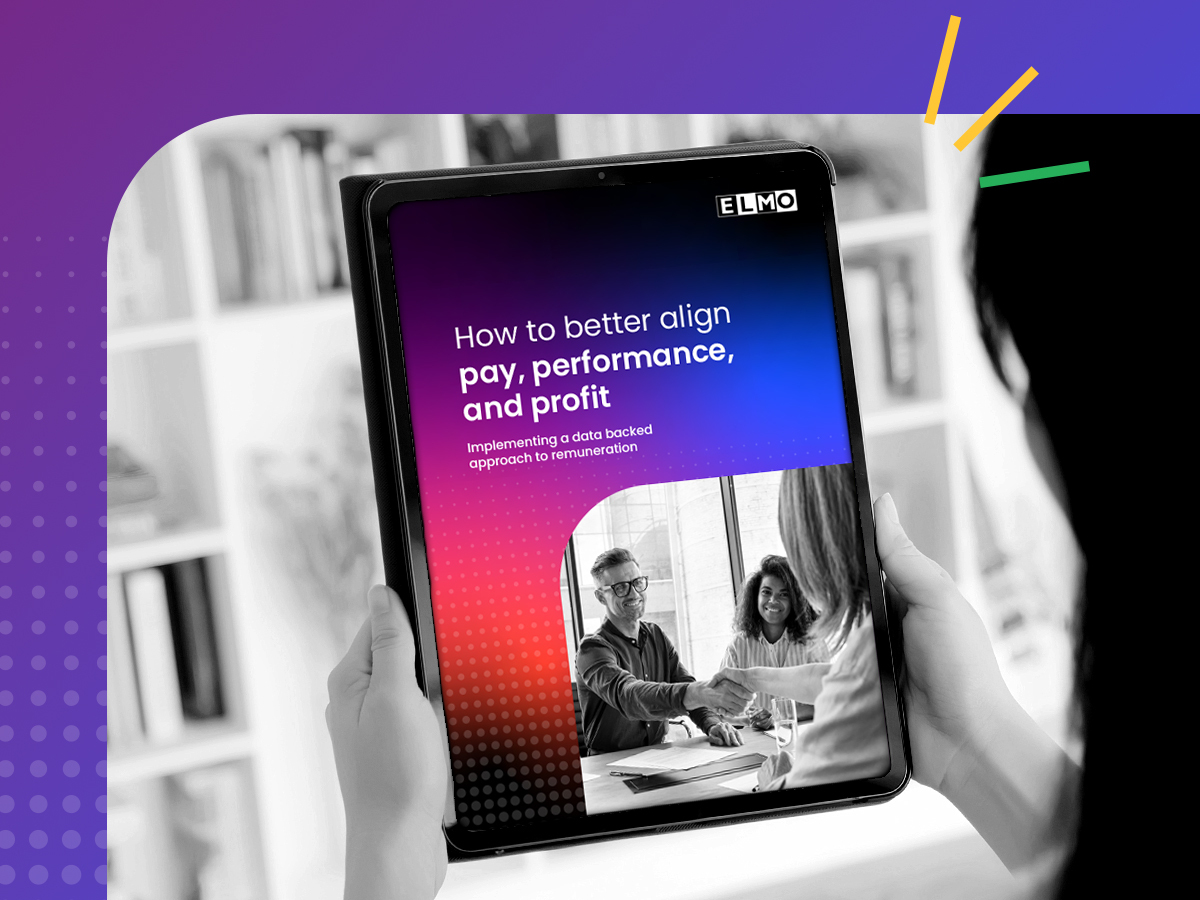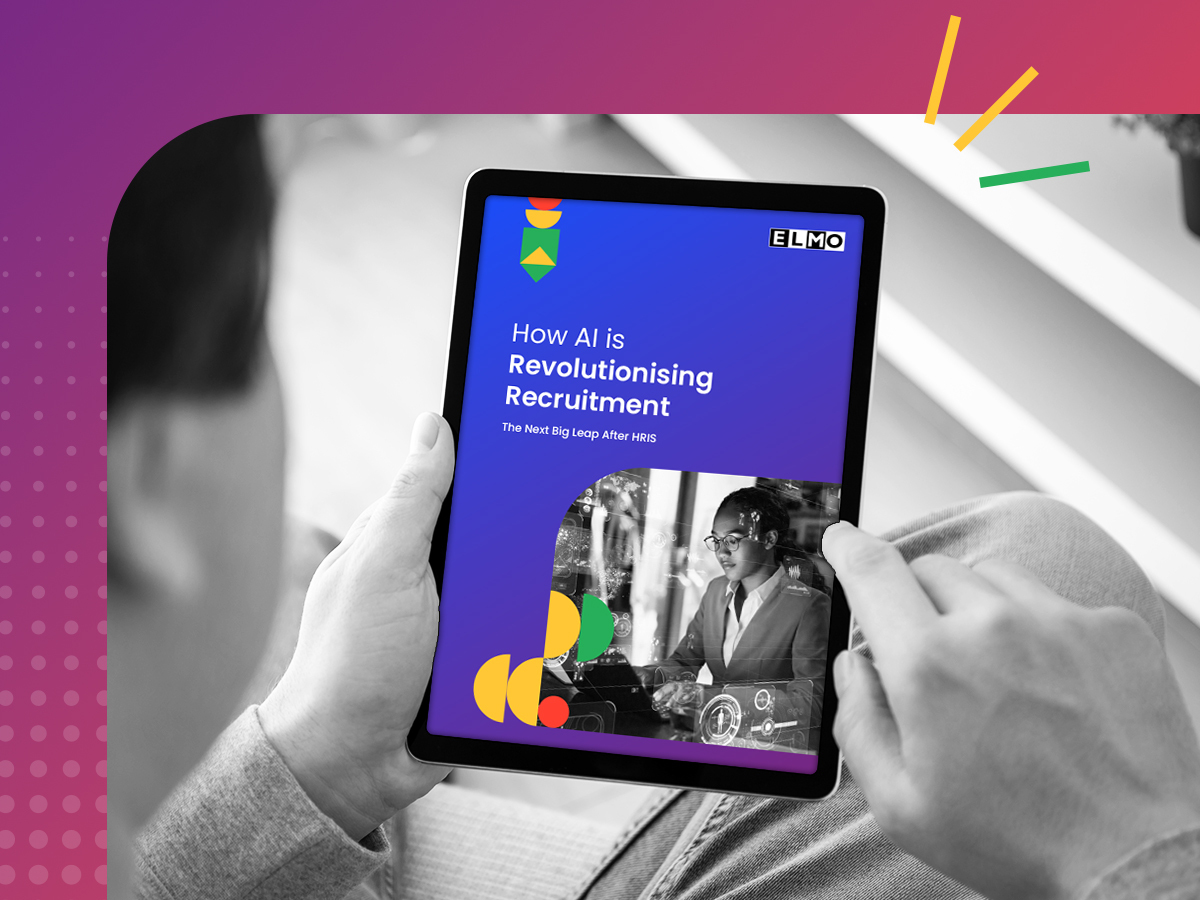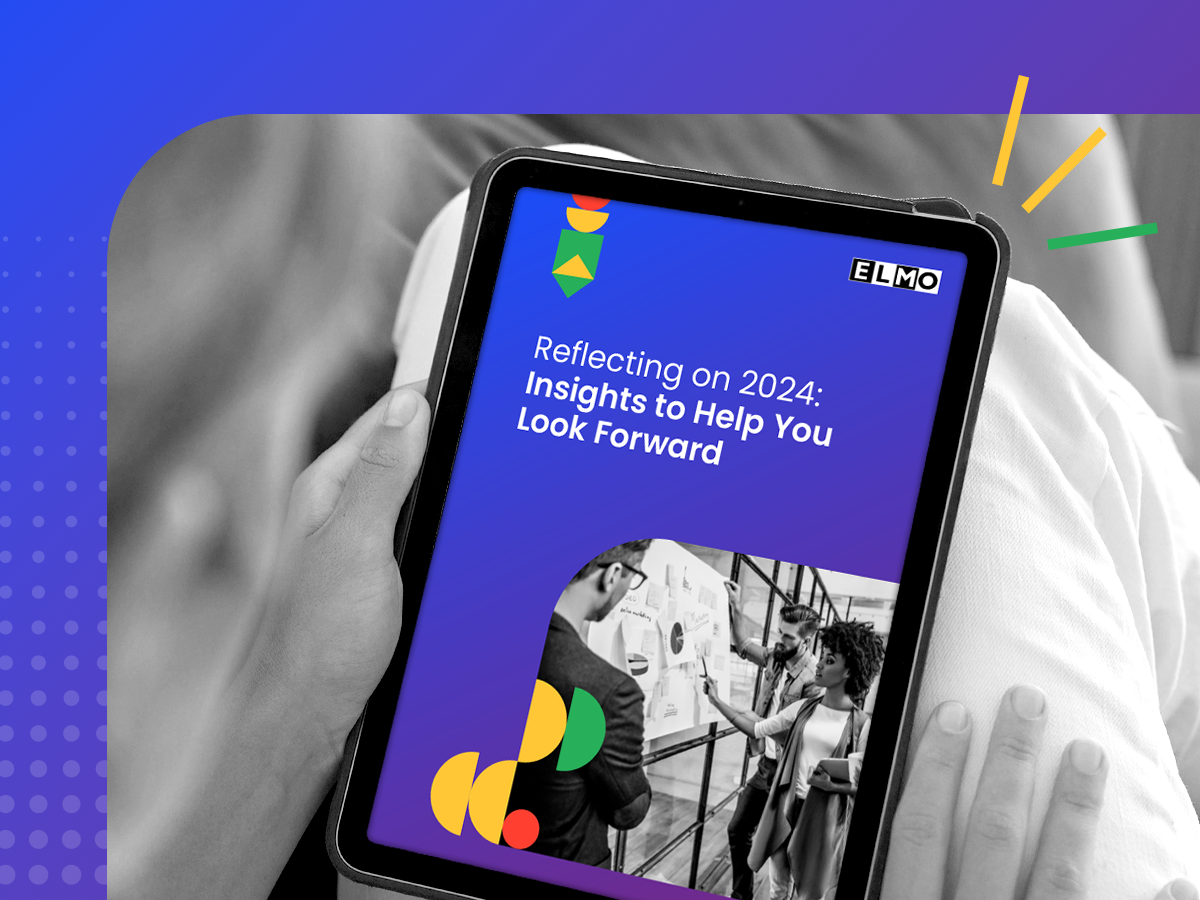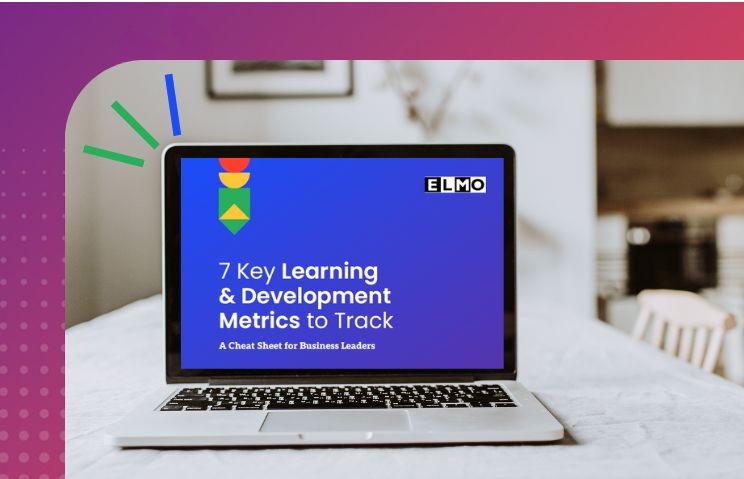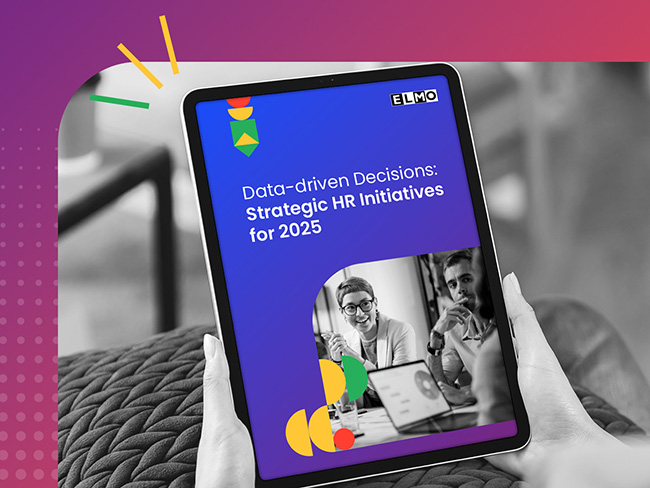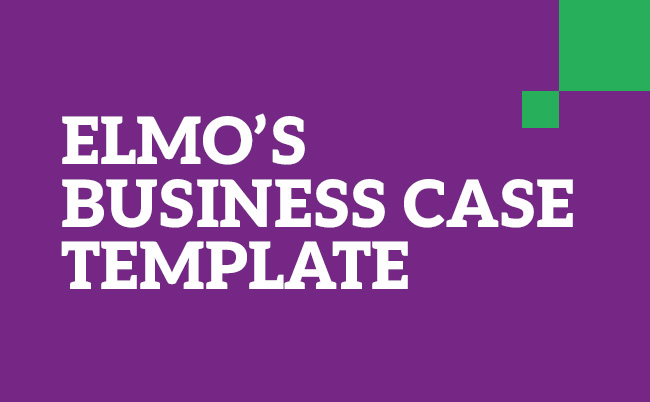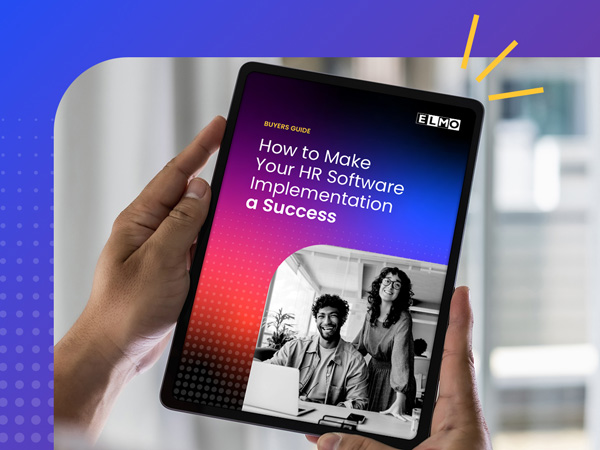What is HRIS? The Ultimate Reference Guide
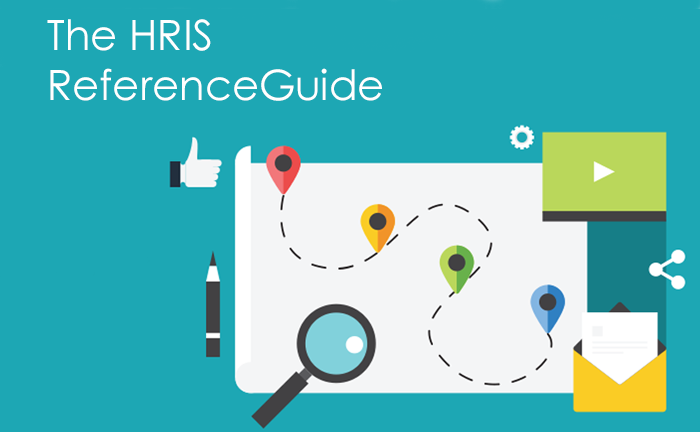
What if you could manage all your payroll, training and HR tasks with one platform that employees will also love to use? Leading businesses are using Human Resources Information Systems (HRIS – sometimes referred to as HCM or HRMS) to save time, cut costs and empower their staff. We explain what this is, how it works, and the features included in a typical HRIS.
It’s natural to feel overwhelmed as your business expands and new employees join your team. Before you know it, you’re struggling to manage piles of paperwork, while navigating multiple apps for different tasks.
Payroll, onboarding, recruitment, leave entitlements, compliance, overtime and expenses – where do you find the time to sort through it all?
Alarmingly, you risk breaching employment law if this becomes a burden you can no longer handle.
However, there is a practical solution: a single software package that quickly and accurately takes care of all your human resources needs, no matter how many staff you have. This accessible platform automates manual processes, saving your business time, money and resources.
You can run all your HR, payroll, recruitment and training services on a single portal, if you choose a quality product. In doing so, you’ll be working with a “single source of truth” that can be updated easily to ensure data accuracy.
The ultimate goal of a HRIS is to take care of an organisation’s most valuable resource: its people.
In this HRIS Reference Guide we’ll provide:
- Definition: What is a HRIS?
- Pain Points: Why would you need a HRIS?
- Core functions: What services should your HR software include?
- A closer look: Benefits of HRIS to the organisation and its employees
- How to choose a HRIS
1. Definition: What is a HRIS?
A HRIS is online software that stores and manages all your employee data on one platform that is easy to use.
The HRIS merges all apps and programs relating to data tracking, payroll, recruitment, learning and other essential HR functions into one universal, cost-effective system. This can be customised to suit your unique business needs and may include all aspects relating to an employee’s lifecycle with an employer, from “hire to retire”.
Instead of scurrying around looking for paper files, data is uploaded to the system once and can then be updated easily from a centralised point. It’s then made available to all staff, and tiered access allows greater functionality to managers or system administrators.
Multiple employees can log on at the same time and collaborate with each other, from any device.
This eases the administrative burden and simplifies the work day for you and your HR team.
The number of HRIS available is extensive, with some systems designed for small business and others aimed at larger enterprises. No matter which software vendor you choose, all HRIS help you manage employee data and maintain compliance with employment regulations.
Is there a difference between HRIS, HCM and HRMS?
Yes and no. The HRIS software market has exploded over the past 2 decades, leading to some confusion around labeling. The 3 most commonly used terms to describe HR, Payroll and/or Talent Management software are:
- HRIS (Human Resources Information System)
- HCM (Human Capital Management)
- HRMS (Human Resources Management System)
The 3 terms are often used interchangeably to describe software that incorporates cloud computing, databases and other elements to create an overarching solution for managing all workforce management needs. Part of the confusion around their usage stems from the rapid development of these technologies, which resulted in the development of various terms simultaneously.
A deeper look reveals some subtle differences in the functionality of these 3 systems.
HRIS
With origins that can be traced back to the start of the HR tech revolution, the HRIS is usually considered the most “foundational” option. At its core, a HRIS is designed to manage people, procedures and policies. It typically includes the following capabilities:
- Core human resources functions, including payroll processing
- Recruitment capabilities, including applicant tracking systems (ATS)
- Leave management
- Reward & Recognition
- Remuneration & Benefits
- Training & Development
- Workflow solutions and automation
- Self-service
- Reporting
HCM
HCM systems take the functionality of HRIS a step further. In most cases, this type of system includes all the capabilities that are offered with HRIS, with the addition of talent management capabilities. HCM systems will typically include:
- Onboarding automation
- Performance management
- Succession management solutions and automation
- Salary benchmarking
- In-depth analytics of employee performance, productivity and other metrics
HRMS
HRMS is typically the most extensive and will usually include all the features that are offered in a HCM system and a HRIS. However, they don’t always offer extensive talent management features, and not all products include scheduling capabilities. HRMS will typically include:
- HRIS and HCM capabilities and features
- Payroll processing automation and solutions
- Time and labour management, or TLM, which enhances productivity and, in many cases, improves profitability
- Support for a global workforce
These differences are summarised in the table below:

2. Pain points: Why would you need a HRIS?
Every organisation is unique, with different priorities, challenges and opportunities. However, there are some common triggers that would motivate an organisation to explore the option of purchasing a HRIS. These might include:
- A growing company. There comes a point (usually 30-60 employees) when it becomes difficult to gather, update, and track multiple pieces of information for each employee. Spreadsheets and manually handling data no longer cuts it – it’s simply too time consuming and prone to errors.
- Complex workforces with staff operating under different awards, and a mix of full-timers and gig workers.
- A geographically dispersed workforce.
- Multiple legacy systems, with employee data spread across all of them. Having no “single source of truth” can result in data processing errors and reporting difficulties.
- Compliance issues. Keeping track of compliance related issues, especially training, can be a drain on precious resources.
- Lack of resources. Most HR teams are stretched, with team members juggling multiple priorities. Without the assistance of technology, HR teams can find their time is spent on manual transactional tasks such as printing documents, obtaining sign-offs and chasing approvals, instead of strategic operations.
- A desire for more sophisticated reporting. Today the onus is on HR to make decisions based on data and to report on trends with the same level of sophistication as other business departments. This can only be done efficiently by having all data in a single location with a HRIS.
- A better employee experience. A good HRIS can help improve employees’ perceptions of their organisation. Whether it’s a seamless onboarding process, an app that allows them to look up a coworker’s contact information, or the ability to update and request time off, a good HRIS can enhance the work experience for all employees.
3. Core functions: What services should your HR software include?
There are many HR solutions, ranging from basic to sophisticated. Start-ups might initially take a no-frills approach and upgrade their program as they expand. But if you’re a larger or growing business, it’s better to choose a platform that integrates payroll, learning, talent management and performance management.
Why? Imagine how much time and money you can save by using one system for all your HR and payroll tasks. This is preferable over training staff on how to use multiple programs, and having to keep track of various software updates across your organisation.
A comprehensive and cost-effective HRIS, HRMS or HCM solution will cover:
HR Core and Manager/Employee Self-Service (ESS)
The ability to centralise people management data and provide tools for employees and managers to review and update their own personal details, as well as leave entitlements, payslips and more, can help ease the admin burden for HR teams. It also provides managers with all the data necessary to make more informed decisions.
Payroll
Avoid human error when paying your staff. Access historical and current payroll data with the click of a mouse. Identify trends or anomalies. Create detailed, automated reporting that meets compliance laws. Provide self-service functionality for employees and managers.
Remuneration
Ensure employees are being paid market rates, allow managers to stay within remuneration budgets and manage complex rem structures including discretionary or complex short-term incentive (STI)/long-term inventive (LTI) plans.
Leave management
Give your employees up-to-date views of their leave entitlements. Examine your staff availability at a glance.
Recruitment
Make it easy for candidates to apply by streamlining all recruitment functions. Create job ads, find the best candidates from any talent pool, sort through applications, develop screening questions, schedule interview times, and send out job offers.
Onboarding
Speed up onboarding for new recruits, provide essential information about their role, their team and the company, enable employees to input their personal details (banking, superannuation, Tax File Numbers (TFN)), select courses for new hires to complete.
Performance management
Managers can collaborate to generate appraisal reviews and graphical reports. They can also set development tasks for under-performing staff, organise 360-degree performance meetings, track performance and deliver feedback in a digestible manner. Employees can monitor their own performance, develop KPIs and provide feedback.
Succession Management
Identify your strongest employees and match their skills to gaps in your workforce, identify flight risks and create personal development plans to motivate staff. Help managers decide who to promote with real-time, accurate reports.
Learning Management
Keep track of all learning and development occurring in your business. Monitor compliance-related training and customise online courses that enhance the skills of your employees, helping them to grow with your business. Empower employees with self-directed learning and provide access to online course libraries.
Key features to look for in a HRIS
It’s critical to use a platform that encourages all employees to get onboard through its ease-of-use. In addition to being user-friendly, the best HR solutions share the following features:
- Quick installation and roll-out of the system, so you’re up and running in no time
- Effective integration with all of departments, as well as existing business software
- Multi-user access at the same time, from any device
- Remote access for those with permission
- The ability to customise content to your business needs
- An intuitive, user-friendly interface
- The highest security and privacy protection
- Local technical support and regular software updates from your provider
- Collaboration between users
- Real-time reports and automated data
- Self-service for employees
- On-demand applications
4. A closer look: Benefits of HRIS to the organisation and its employees
The unification of employee data and HR processes in a single system provides huge benefits for organisations, large and small. The best system will change the way your team operates, for the better.
Integrated HRIS, HCM or HRMS platforms transform your business, by boosting productivity, upskilling staff and promoting workplace values. They can enhance productivity and streamline operations across the entire employee lifecycle, from recruitment to retirement.
The real benefits of HRIS systems can be split into two categories: those that benefit the organisation; and those that benefit the employee.
Benefits to the organisation
Save time for your HR team by streamlining processes
No doubt your HR team spends valuable time on everyday tasks that require manual filing, multiple programs or messing around with spreadsheets, at the expense of the more strategic aspects which add value to the business.
An online HR solution gives your department easy access to employee records, at the click of a mouse. All of this is recorded, and changes are backed up daily to ensure complete visibility, security and privacy.
All processes can be streamlined. Holiday requests, for example, can be automatically approved or declined based on predetermined criteria. Alternatively, requests can be assigned to the relevant manager.
Data is automated to quickly generate real-time reports. Any changes made to employee information immediately syncs across the entire system, so HR doesn’t have to update multiple files.
Easily comply with government laws and regulations
Since 1 April 2018, Australian businesses with 20 or more employees were required to report to the Government on every pay cycle under Single Touch Payroll (STP) requirements. STP Phase 2 came into effect in January 2022, which added additional information to the reporting requirement. There are also deadlines in place for paying employee superannuation contributions, under SuperStream. Similarly, in New Zealand, organisations need to be KiwiSaver compliant for their super contribution and ensure they are Payday ready for seamless lodgements to the IRD.
An integrated HR and payroll solution takes care of these, and many other regulations, using automated data and reporting.
The software is updated to meet changing Government policies, meaning that managers don’t have to worry about the risk of failing to comply each time a new law is introduced.
Reduce paperwork and say goodbye to fiddly spreadsheets
All your data is stored on one system, so there’s no need for manual files or duplication of content. The quick generation of real-time reports means your staff don’t have to play around with cumbersome spreadsheets. This leaves more time for strategic talent management and decision-making.
Benefits to employees
Improved engagement levels
You can make work more enjoyable for your team, using tools that help them to organise their workload and complete training in a flexible way.
A quality HRIS gives employees access to accurate information on their profiles.
The best cloud HR & payroll portals let employees log into their accounts from any device, so they can work from anywhere, at any time. Managers can also use the HRIS to reward people and encourage peer to peer recognition.
Boost employee skills in a competitive world
You need to refresh your workers’ skills to stay ahead of the game, in light of evolving technology. The best HRIS, HRMS and HCM systems offer tailored online courses in digestible formats, and allow employees and managers to track progress and collaborate. Not only does this benefit your business, it also empowers and motivates staff, who appreciate being invested in.
Help your managers to make better and faster decisions
HR and payroll solutions deliver accurate, clear and detailed reports, by pulling real-time data from different streams.
You could, for example, view an employee’s strengths and weaknesses at a glance and use this data to make an informed decision about a promotion. Managers can also work together in a secure and private system.
Reduce the cost of hiring and save time
Recruiting new staff can be tedious and expensive. Streamlined HRIS tools enable you to start hiring straight away, while tapping into internal and external talent pools. There’s little effort on your part.
Managers can also communicate better with applicants, by generating personal, tailored letters, scheduling interviews and sending automated text messages. Candidates who enjoy the application process are 38% more likely to accept a job offer.
Employee self-service
Employees spend valuable hours each week sending holiday requests, checking schedules and searching for contact information, which is non-productive time for them and inefficient for the company.
By implementing a HRIS, these requests can be carried out quickly with automated workflows, making the response for many of these requests instantaneous, enabling staff to focus on strategic aspects of their role.
Enhanced communication
Most employees communicate with their HR department using traditional forms of communication such as phone or email, which can lead to process breakdowns if matters are forgotten or messages are not relayed.
A HRIS provides a single means of communication, meaning that all HR communication is kept in a single repository, thereby reducing the risk of requests getting lost in the system and increasing employee satisfaction.
5. How to choose a HRIS
Once you have determined the need for a HRIS, you should take the time to assess exactly what features your organisation requires. One size does not fit all.
However, determining your needs for any new business application is no easy task. This is especially true if you have little experience with this kind of system. Use the simple four-step process below, to help get the right mix of HRIS capabilities for your company.
Step 1 – On-premise or cloud?
HRIS are available as on-premise (installed on your servers) or hosted (in the cloud) applications. Which is best for your needs? The answer to this question will depend on the size of your organisation, the number of legacy applications you need to connect with and the structure of your workforce (are they on-site, remote, geographically dispersed, working across multiple time zones or over random business hours?).
For example, a large distributed organisation with a large number of remote employees will find a hosted solution much more cost effective and secure than an on-premise solution; however a single site manufacturing operation where most employees work on-site, and has a large number of legacy applications may benefit from an on-premise solution. Talk to your IT department or a number of solution providers before committing to a system.
Step 2 – Determine your budget
This may seem obvious but there are a large range of HRIS available, with prices ranging from a few hundred dollars per month to tens of thousands, so you’ll need to be realistic in selecting a system that matches your business needs in line with your budget.
Depending on the nature of your organisation, you may also have to factor in implementation and system integration costs, which can take up a considerable amount of your available budget. This is because scripts may have to be written so that your chosen solution can communicate with any legacy business applications your organisation uses, and extensive testing will also have to be carried out to ensure everything works together as planned. Your chosen solutions provider can guide you on the most appropriate offering and help you anticipate costs associated with your implementation and systems integration if required.
Step 3 – Do your research
At this stage, you probably already have a good idea already what HRIS features are available. Determine which features your company may need, and break them down into “must haves” and “nice to haves” before carrying out your search for an HRIS provider. Be sure to compliment any online research, by reaching out to industry peers or other reliable networks for invaluable first-hand feedback.
Step 4 – Talk to vendors
Create a shortlist of solutions providers from your research phase (three is a good number), and do your due diligence on each. Armed with your list of features and available budget reach out to the selected vendors and probe them on any questions that you may have uncovered during your research phase. If you’re comfortable with your initial conversations, arrange a demonstration of their solution to get a better assessment of how the software may suit the needs of your organisation. Keep your lines of communication with your shortlisted vendors open until you are ready to take the final step of vendor selection.
Conclusion
An integrated HR and payroll solution, when used properly, can enhance the efficiency and effectiveness of your business.
Make sure you don’t settle for a solution unless it covers the services that you need within your budget. Your vendor should be able to create a package that’s customised for your organisation, and be able to offer you the option to add more services later.
Once you make the final choice, ensure that your employees understand how and why your organisation is moving to an automated HR and/or payroll solution, and educate them on the benefits that the system will have on them as individuals, as well as for the team and organisation as a whole.
Once implemented, organise education and training sessions to demonstrate how and why they should use the system – covering all relevant areas that employees need to know in order to make most effective use of the system. Train new recruits during the onboarding process, so they embrace good habits from the start.
And remember:
The beauty of adopting one fully integrated system is that you only need to train employees on how to use a single, intuitive system.
ELMO Software is a cloud-based solution that helps thousands of organisations across Australia, New Zealand and the United Kingdom to effectively manage their people, process and pay. ELMO solutions span the entire employee lifecycle from ‘hire to retire’. They can be used together or stand-alone, and are configurable according to an organisation’s unique processes and workflows. Automate and streamline your operations to reduce costs, increase efficiency and bolster productivity. For further information, contact us.
 HR Core
HR Core 
